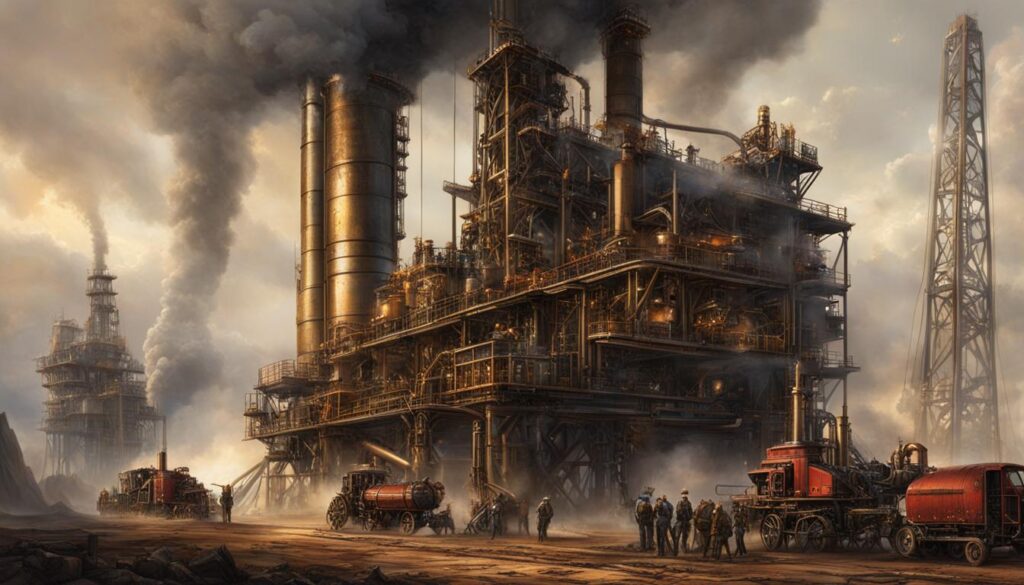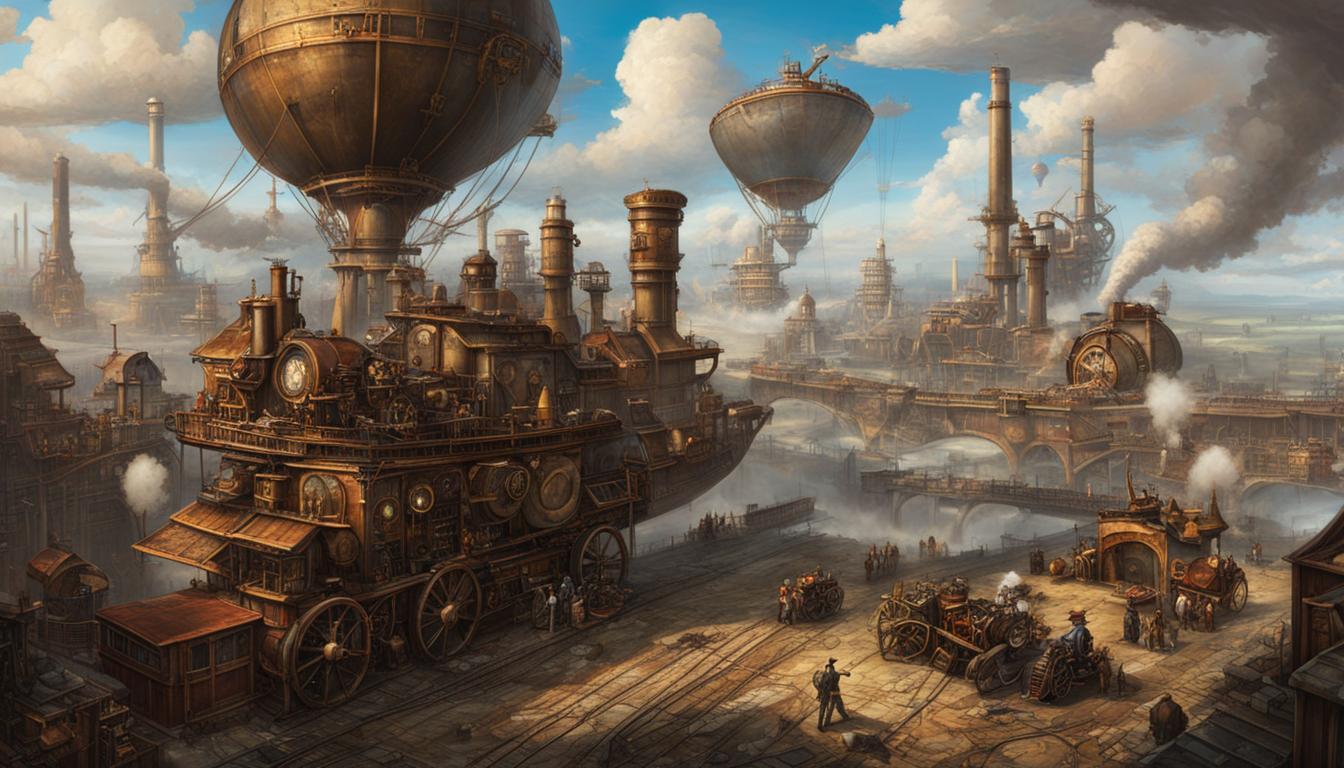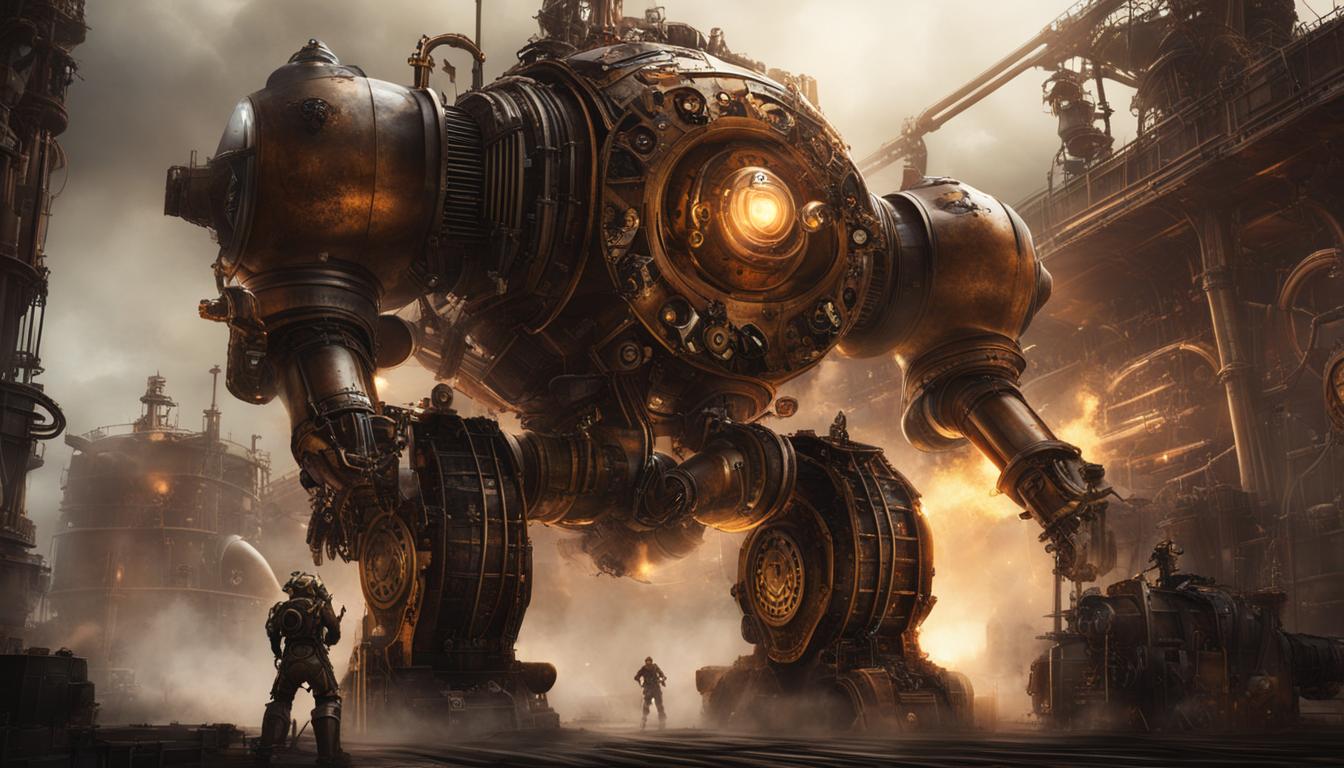Steam power, once considered obsolete, continues to surprise us with its relevance in the 21st century. From powering homes to manufacturing goods, steam finds its place in contemporary technology in innovative ways. While we may not always notice it, steam continues to evolve, finding new applications in the modern era.
Key Takeaways:
- Steam power is still widely used in various industries, including home heating, manufacturing, and food production.
- Steam plays a crucial role in generating electricity and can be used to produce other fuels like hydrogen.
- New York City heavily relies on steam power, using it for heating and cooling systems in iconic buildings.
- Advancements in steam technology have led to improved efficiency and reduced environmental impact.
- Pioneers like André Chapelon and Livio Dante Porta have influenced modern steam locomotive design.
Steam in Everyday Life
While steam power might seem like a relic of the past, it still plays a significant role in our everyday lives, often going unnoticed. From your morning cup of coffee to industrial processes, steam is quietly powering many aspects of modern technology.
One of the most common uses of steam in our daily routines is frothing milk for our beloved lattes and cappuccinos. The steam wand on an espresso machine injects hot, pressurized steam into the milk, creating a creamy and frothy texture. It’s this simple application of steam that allows baristas to craft those beautiful latte art designs we’ve all come to love.
Steam is also a crucial component in various industrial processes. For example, in the food industry, steam is used for canning and processing food products. The high heat and moisture provided by steam ensure that these products are properly sterilized and preserved, maintaining their quality and safety.

Furthermore, steam plays a pivotal role in generating electricity through the use of turbines. Steam turbines harness the power of steam to drive the rotation of the turbine blades, which, in turn, generates electrical energy. This process is widely used in power plants worldwide and forms a crucial part of our energy infrastructure.
As we go about our daily lives, it’s worth remembering that steam power continues to shape and enhance the technology we rely on. From the steam-powered espresso machines in our favorite cafes to the industrial processes that ensure the safety and preservation of our food, steam is a quietly omnipresent force, driving our modern machines and making our lives easier.
Steam in New York City
New York City is a bustling metropolis known for its iconic landmarks and vibrant energy. But beneath the surface, there is a hidden power that keeps the city running smoothly – steam. Yes, steam power plays a vital role in the infrastructure of the Big Apple, powering not only electricity generation but also heating and cooling systems throughout the city.
The steam system in New York City is an impressive network of pipes that spans over 100 miles, delivering steam to buildings for various purposes. One of the primary uses of steam in NYC is for heating. Many iconic landmarks, including Grand Central Station, the Empire State Building, and the World Trade Center complex, rely on steam for their heating needs. It’s a behind-the-scenes powerhouse that ensures the comfort of millions of New Yorkers every day.
But steam power doesn’t stop at heating. It also plays a crucial role in cooling systems. Steam absorption chillers use steam as the driving force for the cooling process, providing relief during hot summer months. These innovative systems not only help to maintain a comfortable temperature but also contribute to energy efficiency and sustainability in the city.
| Landmark | Steam Usage |
|---|---|
| Grand Central Station | Heating, Cooling |
| Empire State Building | Heating, Cooling |
| World Trade Center complex | Heating, Cooling |
So, next time you’re walking the streets of Manhattan, take a moment to appreciate the hidden power of steam that keeps the city thriving. From its role in powering iconic landmarks to its contribution to energy efficiency, steam power in New York City is a testament to the enduring legacy and modern applications of this age-old technology.

Advances in Steam Technology
Throughout history, there have been significant advancements in steam-powered machinery to meet the ever-evolving needs of industries. Modern applications of steam engines have led to innovations in steam-powered technology, making it more efficient and effective than ever before. These advancements have revolutionized various sectors, including manufacturing, transportation, and energy production.
One notable advancement in steam technology is the development of automatic boiler control systems. These systems allow for precise control over steam generation, optimizing efficiency and reducing fuel consumption. Additionally, vertical water-tube boilers have been introduced, enabling faster steam generation and increased power output. These advancements have made steam-powered machinery more reliable and responsive to modern demands.
Another significant improvement in steam technology is the introduction of condensing systems. These systems utilize the waste heat from steam engines to improve overall efficiency and reduce water consumption. The Anderson condensing system, developed for the Southern Railway in the early 20th century, is a remarkable example of this innovation. By capturing and reusing wasted heat, condensing systems have made steam power more sustainable and environmentally friendly.

Advantages of Modern Steam-Powered Technology
The advancements in steam technology have brought several advantages to modern applications of steam engines. One key advantage is the ability to generate power from a wide range of fuel sources. Steam engines can utilize renewable fuels like wood and biofuels, making them a sustainable energy option. Moreover, steam power offers lower CO and NOx emissions compared to other combustion technologies, contributing to cleaner air quality.
Furthermore, steam-powered machinery is highly adaptable and can be used in various industries. Whether it’s powering large-scale electricity generation or driving industrial processes, steam engines provide a versatile solution. Their ability to harness waste heat and utilize different heat sources makes them adaptable to different contexts and energy needs.
In conclusion, modern advancements in steam-powered machinery have transformed the capabilities and applications of steam technology. From automatic boiler control systems to condensing systems, these innovations have improved efficiency, sustainability, and adaptability. Steam power continues to play a vital role in various industries, demonstrating its relevance and potential for the future.
Notable Contributors to Advanced Steam Technology
André Chapelon and Livio Dante Porta are renowned figures in the field of steam technology. Through their groundbreaking work, they have significantly contributed to the advancement of modern steam locomotives and the overall understanding of steam power.
André Chapelon, a French engineer, revolutionized steam locomotive design in the mid-20th century. He focused on improving the thermal efficiency of steam engines and introduced several innovative features. Chapelon’s designs emphasized better combustion, advanced steam circulation, and optimized heat transfer. His locomotives, such as the SNCF Class 242A and the Nord Railway P63 class, achieved remarkable efficiency and performance, setting new standards in steam power.
“The perfection of a steam engine lies in the achievement of pure mechanical equilibrium.” – André Chapelon
Livio Dante Porta, an Argentine engineer and inventor, made significant contributions to modern steam technology as well. Porta’s research led to the development of improved combustion chambers, exhaust systems with increased draft, and enhanced boiler efficiency. His designs focused on maximizing heat transfer and reducing energy waste. Notable locomotives influenced by Porta’s work include the RENFE 240F and the South African Class 26.
“The steam locomotive must burn as much fuel as possible in a given time, while extracting as much useful work as possible from the products of combustion.” – Livio Dante Porta
Advancements in Modern Steam Locomotive Design
The contributions of Chapelon and Porta paved the way for the evolution of steam locomotives. Their innovative designs and engineering principles continue to inspire contemporary steam locomotive designers. These advancements include improvements in boiler design, combustion systems, and energy efficiency. Today, steam locomotives equipped with modern technologies allow for reduced environmental impact, increased reliability, and enhanced performance. These developments have sparked renewed interest in steam power and its potential for sustainable transportation.

Table: Notable Steam Locomotive Designs influenced by Chapelon and Porta
| Locomotive | Designer | Innovations |
|---|---|---|
| SNCF Class 242A | André Chapelon | Improved combustion, advanced steam circulation, optimized heat transfer |
| Nord Railway P63 class | André Chapelon | Enhanced thermal efficiency, increased performance |
| RENFE 240F | Livio Dante Porta | Improved combustion chambers, efficient exhaust systems |
| South African Class 26 | Livio Dante Porta | Maximized heat transfer, reduced energy waste |
Future Prospects and Carbon Neutrality
As steam power continues to advance and evolve, its potential for carbon-neutrality becomes increasingly promising. With the use of renewable fuels, such as wood or biofuels, steam engines can achieve a significant reduction in greenhouse gas emissions. Carbon neutrality has long been sought after in various industries, and advanced steam technology offers a viable solution to achieve this goal.
One of the key advantages of advanced steam technology is its ability to adapt to different heat sources. This flexibility allows steam engines to utilize waste heat and other renewable energy sources, enhancing their efficiency and reducing their environmental impact. By integrating steam power with renewable fuels, we can create a sustainable energy system that minimizes carbon emissions and contributes to a cleaner and greener future.
Compared to other combustion technologies, steam power is known for its lower CO and NOx emissions. The separation of combustion and power delivery in steam systems enables specific problem-solving at each stage, resulting in improved performance and reduced pollution. Ongoing developments in small-scale stationary plants and micro CHP units further support the transition towards carbon neutrality by offering efficient and environmentally friendly alternatives.
In summary, the future prospects of advanced steam technology are bright, with the potential for achieving carbon neutrality and reducing pollution. By utilizing renewable fuels and optimizing the efficiency of steam engines, we can harness the power of steam while minimizing our impact on the environment. With ongoing advancements and innovations, steam power continues to prove its relevance and importance in the modern era.
Conclusion
As our journey through the world of steam power comes to a close, it becomes clear that this technology is far from obsolete. In fact, it continues to thrive in the modern era, with surprising and innovative applications that push the boundaries of what steam can do.
From the unnoticed role it plays in our everyday lives, such as frothing milk for our morning coffee or steaming vegetables for a healthy meal, to its vital role in powering the turbines that generate electricity, steam power remains an integral part of our society.
Moreover, advancements in steam technology have consistently addressed the limitations of traditional steam power. With the development of automatic boiler control systems, faster steam generation, and more efficient condensing systems, steam power has become even more versatile, efficient, and environmentally friendly.
Looking ahead, the prospects for steam power are promising. As we continue to explore renewable fuels like wood and biofuels, steam power has the potential to achieve carbon neutrality, reducing emissions and fighting climate change. With ongoing developments in small-scale stationary plants and micro CHP units, the future of steam power looks bright.
FAQ
Is steam power still used in everyday life?
Yes, steam power is still used in various ways in our everyday lives. It is used for frothing milk, heating water for cooking, and powering industrial processes.
How is steam utilized in New York City?
Steam power is crucial in New York City for generating electricity in power plants and is also piped into buildings for heating, cooling, and other purposes. The city’s steam system spans over 100 miles of steam pipes.
What advancements have been made in steam technology?
Advancements in steam technology include automatic boiler control systems, vertical water-tube boilers for faster steam generation, and condensing systems for improved efficiency and reduced water consumption.
Who were the notable contributors to advanced steam technology?
André Chapelon and Livio Dante Porta were pioneers in advancing steam technology. Their work influenced the design of modern steam locomotives.
Can steam power achieve carbon neutrality?
Yes, when renewable fuels like wood or biofuels are used, steam power has the potential to achieve carbon neutrality. It is known for its ability to achieve reductions in CO and NOx emissions compared to other combustion technologies.
What are the future prospects for steam power?
Ongoing developments are focused on achieving carbon neutrality and reducing pollution through smaller-scale stationary plants and micro CHP units. Steam power continues to evolve and find innovative applications.





